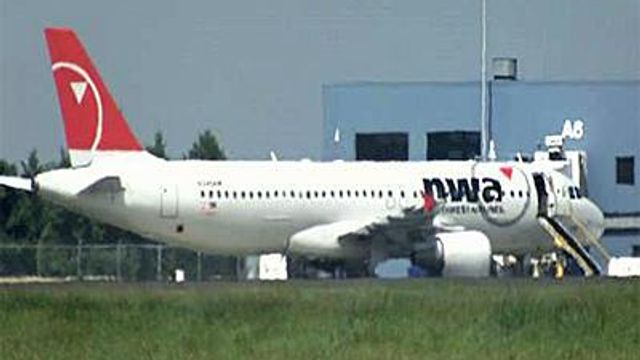Local News
FAA: Bird strike was cause of RDU flight's emergency landing
Passengers reported hearing a loud boom just after take off Sunday morning, then seeing a huge flame from the engine.
Posted — UpdatedMORRISVILLE, N.C. — The Federal Aviation Administration says a bird strike started an engine fire that forced a Northwest Airlines Airbus A320 to make an emergency landing at Raleigh-Durham International Airport Sunday morning.
Airline officials said 153 people were on board Flight 1546, which left RDU for Minneapolis-St. Paul International Airport.
Passengers reported hearing a loud boom just after take off, then seeing a huge flame from the engine. Within 20 minutes of take-off, the pilot turned the plane around and landed safely. There were no injuries.
"The initial investigation revealed that the engine on the right side of the aircraft ingested a large bird and was seriously damaged," FAA spokeswoman Kathleen Bergen said Monday. "The aircraft will remain at RDU until the engine is replaced."
The engine will undergo a more detailed examination after it's removed from the aircraft, Bergen said.
Sunday's strike marks the fourth reported at RDU this year. Two other strikes caused no damage and one caused minimal damage. According to the FAA, there were six significant strikes at RDU from 1990 to 2007.
RDU spokeswoman Mindy Hamlin said the airport uses several proactive strategies to help keep animals away from aircraft.
That includes regular grounds keeping, making the area unattractive to wildlife and loud pyrotechnics to scare off birds spotted any time of day.
Hamlin said there is also constant communication among pilots, air traffic control and ground crews.
"So, if the air traffic control tower sees there are birds in the vicinity of the airport and the airfield, they will let us know, and we can go out an disperse them," she said. "The pilots, if they see birds near them or around the airfield, they will let the air traffic control tower know as well."
The FAA will also look at the airport's mitigation plan to see if there should be any changes to how it handles animals near aircraft, Hamlin said. The plan is already subject to an annual FAA review.
Bird-aircraft collisions are not unusual, but they are being more scrutinized since Charlotte-bound US Airways Flight 1549 ditched into the Hudson River in January after striking a flock of Canada geese after takeoff from New York's LaGuardia Airport.
Both engines on that aircraft were knocked out and all 155 people aboard survived after the plane's pilot, Chesley "Sully" Sullenberger, safely guided landed it into the Hudson River.
That incident led the FAA to release of its bird strike database. The report revealed that airplane collisions with birds have more than doubled at 13 major U.S. airports since 2000.
A team of researchers at North Carolina State University has also studied flying-bird strikes for more than a year in an effort to figure out the best way to manage the situation.
"We want to know how often they cross runways, what time of day they do this," said Liz Rutledge, a PhD student at N.C. State. "(We're seeing) the geese stay within 3 to 5 miles of the airport, so we think its critical to look at these areas."
Rutledge said findings suggest airports could reduce the bird strike risk by moving retention ponds.
RDU is considering putting screens over its ponds to keep birds away.
• Credits
Copyright 2024 by Capitol Broadcasting Company. All rights reserved. This material may not be published, broadcast, rewritten or redistributed.






